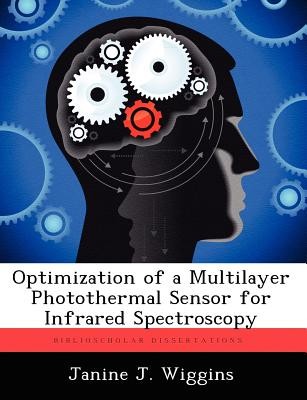
- We will send in 10–14 business days.
- Author: Janine J Wiggins
- Publisher: BiblioScholar
- ISBN-10: 1249594235
- ISBN-13: 9781249594239
- Format: 18.9 x 24.6 x 0.4 cm, minkšti viršeliai
- Language: English
- SAVE -10% with code: EXTRA
Optimization of a Multilayer Photothermal Sensor for Infrared Spectroscopy (e-book) (used book) | bookbook.eu
Reviews
Description
Mathematical modeling and atomic force microscopy were used to optimize a multi-layer reed sensor for use in a new infrared detection system. The reed sensor is designed to deflect in response to temperature variations. In this system, a sample absorbs infrared light (modulated at some frequency to reduce noise) and releases heat into the reed. The layers expand differently, causing the reed to deflect. The deflection is influenced by geometric parameters, such as length and thickness of each layer, and also by the frequency of modulation. Deflection is easily measured using an atomic force microscope. This research applied a mathematical model to the reed sensor, explored the effect of varying geometric parameters, and used experimental testing to evaluate the model. Several reeds were tested to validate the model, which predicted sensitivity, maximum deflection, resonance frequency, and signal to noise ratio. Varying concentrations of absorbing chemical were deposited in the reed, to cause a change in deflection. A cantilever reed having three layers was modeled mathematically using a recently developed thermal model and a mechanical model based on two-layer theory.
EXTRA 10 % discount with code: EXTRA
The promotion ends in 21d.19:22:18
The discount code is valid when purchasing from 10 €. Discounts do not stack.
- Author: Janine J Wiggins
- Publisher: BiblioScholar
- ISBN-10: 1249594235
- ISBN-13: 9781249594239
- Format: 18.9 x 24.6 x 0.4 cm, minkšti viršeliai
- Language: English English
Mathematical modeling and atomic force microscopy were used to optimize a multi-layer reed sensor for use in a new infrared detection system. The reed sensor is designed to deflect in response to temperature variations. In this system, a sample absorbs infrared light (modulated at some frequency to reduce noise) and releases heat into the reed. The layers expand differently, causing the reed to deflect. The deflection is influenced by geometric parameters, such as length and thickness of each layer, and also by the frequency of modulation. Deflection is easily measured using an atomic force microscope. This research applied a mathematical model to the reed sensor, explored the effect of varying geometric parameters, and used experimental testing to evaluate the model. Several reeds were tested to validate the model, which predicted sensitivity, maximum deflection, resonance frequency, and signal to noise ratio. Varying concentrations of absorbing chemical were deposited in the reed, to cause a change in deflection. A cantilever reed having three layers was modeled mathematically using a recently developed thermal model and a mechanical model based on two-layer theory.


Reviews